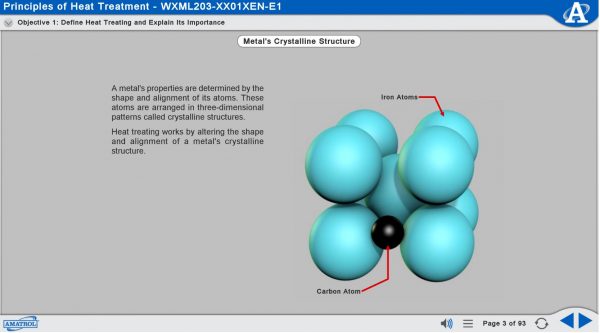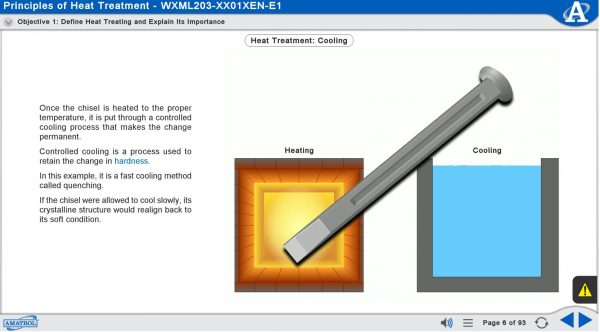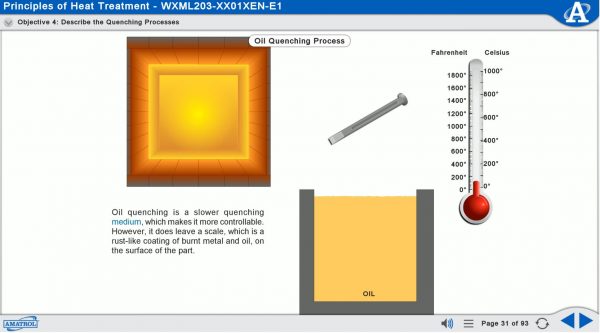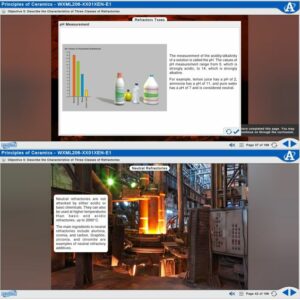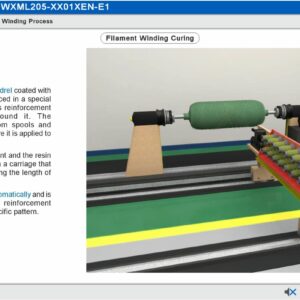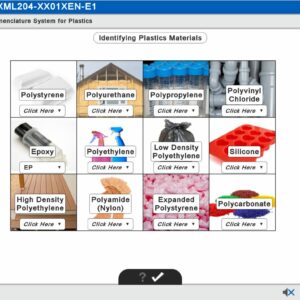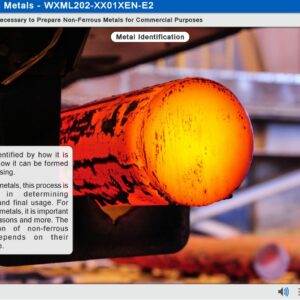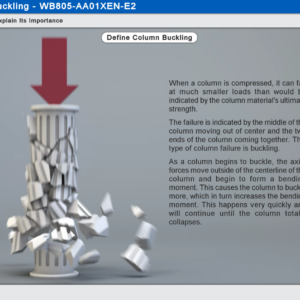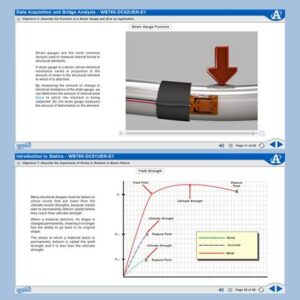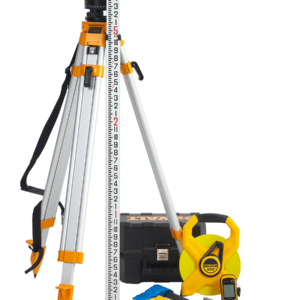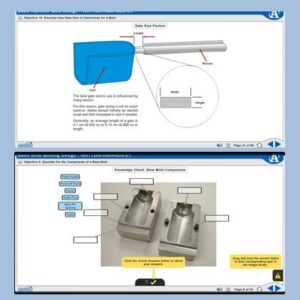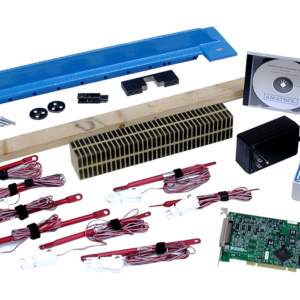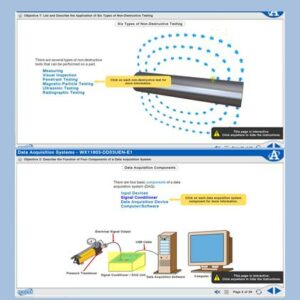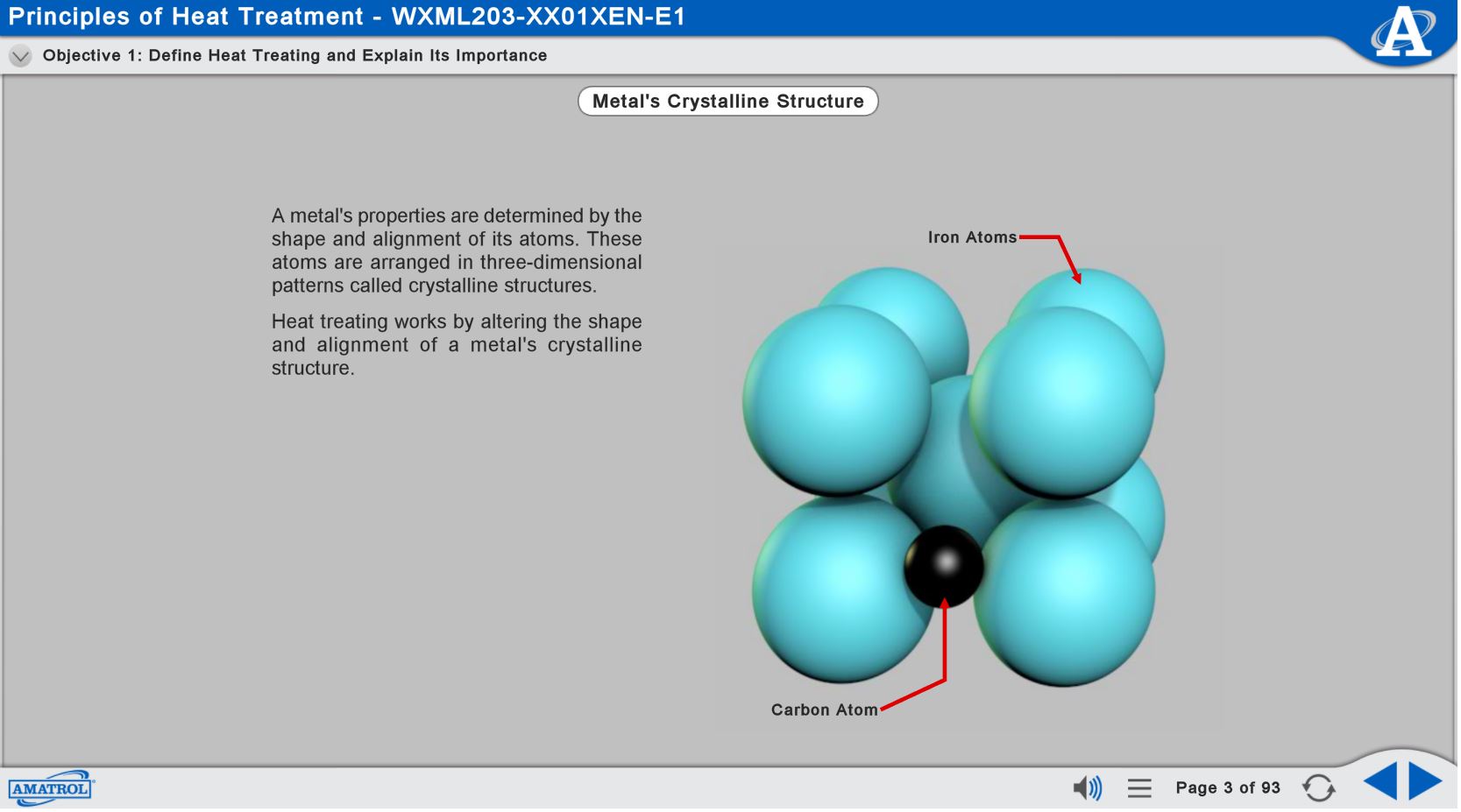
Amatrol's Principles of Heat Treatment eLearning course (MXML203) introduces the properties, processes, skills, and concepts working with heat treating methods commonly employed in manufacturing. These concepts include the different types of heat treating processes, chemical changes of ferrous and non-ferrous metal during heat treatment, batch and continuous production heat treating, heat treated metal testing, and heat treating nomenclature and standards. This course encompasses knowledge needed in today’s world of manufacturing processes and materials.
Heat treatment is the process of modifying a metal’s mechanical properties, such as strength brittleness, machinability, and hardness. Heat treating changes metal properties by heating the metal to a specific temperature, holding it at that temperature for a certain length of time, and then using one of several methods to control the cooling of the metal.

